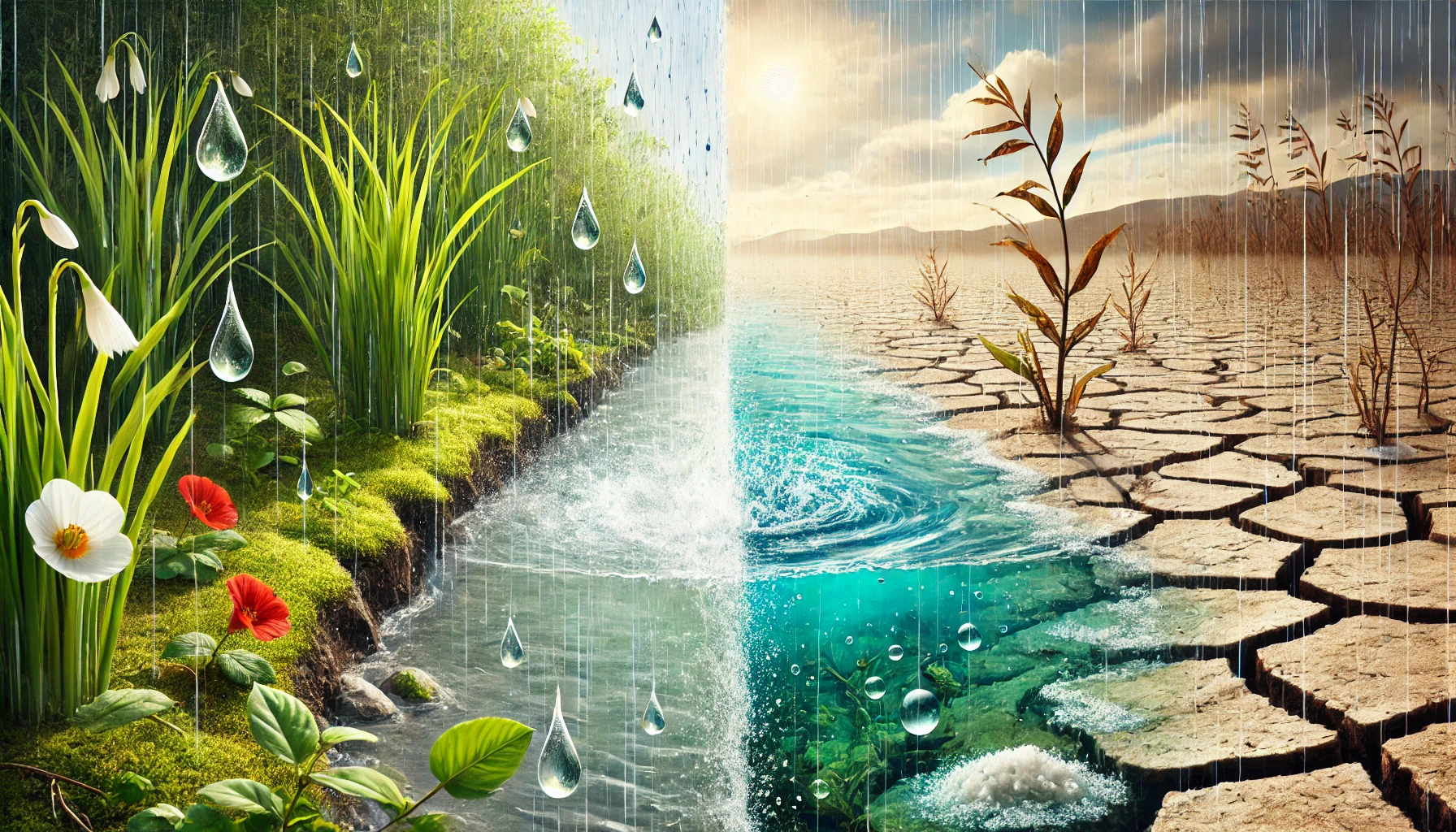Water is a fundamental resource for life, and its availability in different forms plays a critical role in ecosystems, agriculture, and human survival. Among the most significant forms of water are fresh rainwater and salty groundwater. While both are important, they differ considerably in terms of their source, composition, usability, and impact on the environment. In this article, we will explore the characteristics of fresh rainwater and salty groundwater, delve into their respective benefits, and understand the challenges associated with their use.
Fresh Rainwater: A Vital Natural Resource
Rainwater is essentially freshwater that falls from the atmosphere as part of the Earth’s natural hydrological cycle. As clouds accumulate moisture, they eventually release it in the form of rain. When rainwater is collected before it touches the ground, it is free from contaminants and has a purity unmatched by other natural water sources.
Characteristics of Fresh Rainwater:
- Low Salinity: Fresh rainwater has minimal salt content, making it ideal for drinking, irrigation, and other essential uses.
- Neutral pH: Rainwater tends to be slightly acidic but generally maintains a pH level close to neutral (around 5.6 to 7), which makes it suitable for plant growth and consumption.
- Minimal Contaminants: Since it hasn’t yet interacted with the Earth’s surface, rainwater is relatively free from pollutants such as minerals, salts, and man-made contaminants that often infiltrate groundwater supplies.
Benefits of Fresh Rainwater:
- Clean Water Supply: Rainwater harvesting has become increasingly popular in regions where clean drinking water is scarce. By collecting rainwater, communities can access a renewable and safe source of water for personal use.
- Eco-friendly Irrigation: Rainwater is excellent for agriculture, as its low salt content and balanced pH make it ideal for nurturing crops without the risk of soil degradation due to excessive salinity.
- Reduction in Water Bills: By installing rainwater collection systems, households and businesses can reduce reliance on municipal water systems, which in turn can lower water bills and reduce strain on local water supplies.
- Sustainable Resource: Unlike other water sources, rainwater is naturally replenished. This makes it a sustainable option for regions prone to drought or limited freshwater resources.
Challenges:
Although rainwater is a valuable resource, it faces challenges such as:
- Seasonal Availability: Rainfall is inconsistent and dependent on weather patterns, which makes it unreliable in arid regions or during dry seasons.
- Potential Contamination: If rainwater is collected after it has interacted with polluted surfaces, such as roofs or ground, it can pick up contaminants that make it unsafe for drinking without treatment.
Salty Groundwater: A Common Yet Complex Water Source
Groundwater, stored in aquifers beneath the Earth’s surface, is a vital water source for many communities. However, not all groundwater is fresh. In many parts of the world, particularly in coastal areas or arid regions, groundwater is naturally saline. This salt content can occur due to geological conditions, seawater intrusion, or evaporation processes that concentrate salts in underground reservoirs.
Characteristics of Salty Groundwater:
- High Salinity: Salty groundwater contains a significant amount of dissolved salts, primarily sodium chloride. The salt content can vary greatly depending on the region and the depth at which the water is extracted.
- Varying pH Levels: The pH of salty groundwater can fluctuate depending on the mineral composition of the aquifer. Saline water may sometimes be more acidic or alkaline, complicating its usability.
- Presence of Minerals: In addition to salts, groundwater often contains a variety of minerals such as calcium, magnesium, and iron, which may affect its taste and make it less suitable for certain applications.
Benefits of Salty Groundwater:
- Alternative Water Source: In regions where freshwater is scarce, salty groundwater can serve as an alternative, particularly for industrial purposes or livestock watering where the salt content is less of a concern.
- Geothermal Energy: In some cases, salty groundwater is used for geothermal energy production, as the water in underground aquifers can retain heat and be harnessed for energy.
- Desalination Potential: Salty groundwater can be treated through desalination processes, which remove salts and minerals, making it potable. Desalination is increasingly used in regions facing freshwater shortages, such as the Middle East.
Challenges:
The use of salty groundwater is fraught with complications, including:
- Soil Salinization: Irrigating crops with salty groundwater can lead to soil salinization, where salts accumulate in the soil, reducing its fertility and eventually rendering it barren. This is a major concern in agricultural regions dependent on groundwater for irrigation.
- Water Quality Issues: Salty groundwater is often unsuitable for drinking without treatment, and desalination processes can be costly and energy-intensive. Without proper treatment, consumption of saline water can lead to health issues such as dehydration or kidney problems.
- Seawater Intrusion: In coastal areas, excessive pumping of groundwater can lead to seawater intrusion, where the freshwater in aquifers is replaced by salty seawater. This not only depletes local freshwater supplies but also increases the salinity of groundwater, further complicating its use.
Conclusion: Choosing the Right Water Source
Both fresh rainwater and salty groundwater are important water resources, but their usability depends largely on local environmental conditions, available infrastructure, and the specific needs of the region. Fresh rainwater is generally a more sustainable and eco-friendly option, particularly for domestic use and agriculture, thanks to its low salinity and purity. However, in regions where rain is scarce or inconsistent, salty groundwater might be the only available source, albeit with challenges such as desalination and soil salinization.
As water scarcity continues to be a pressing global issue, managing both fresh and saline water resources effectively will be key to ensuring that all regions have access to safe, sustainable water supplies.








